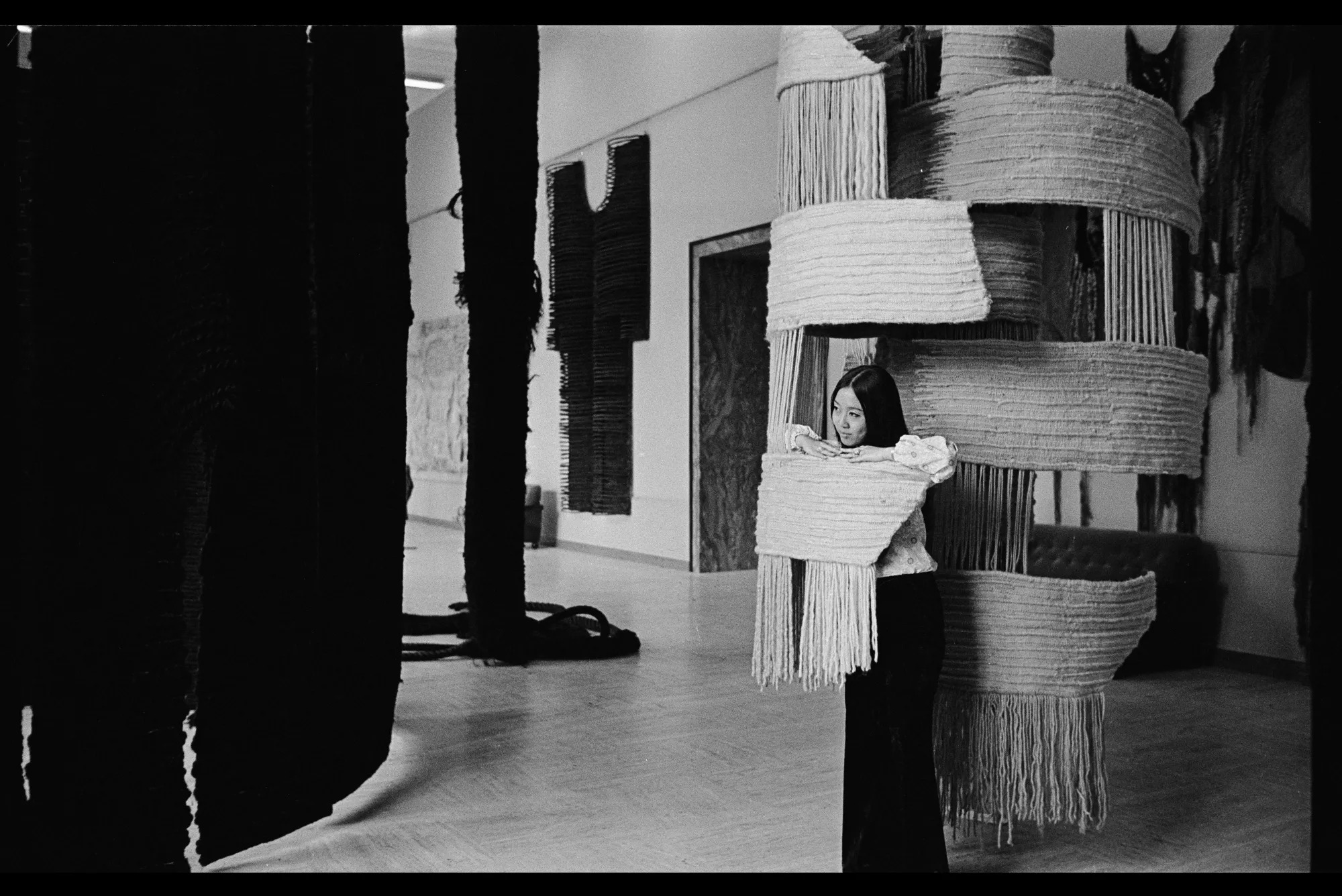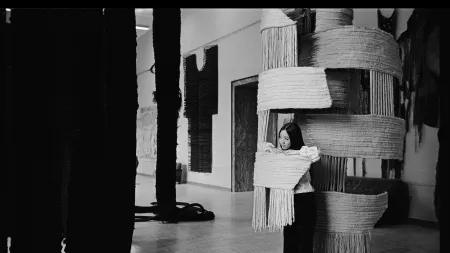
In 1968, fashion designer Pierre Cardin expanded his licensing business with plans to grow his brand in China. It took a decade of visits to the country before Cardin staged his first ready-to-wear shows there, with the first ones taking place in Beijing and Shanghai in 1979.
That was just three years after the death of Mao Zedong, whose passing initiated a period that saw China’s economy open up, allowing in foreign businesses that had once faced significant obstacles there. And the reason Cardin was able to participate at all was because of a socialite named Song Huai-Kuei.
Compared to Cardin, who’s been the subject of many museum shows over the years, Song has rarely received sizable showcases within arts institutions. But that is starting to change with a show at M+ in Hong Kong. Titled “Madame Song: Pioneering Art and Fashion in China,” the show, on view through April 14, views her as multi-hyphenate ahead of her time.
As this exhibition tells it, Song was an artist, an entrepreneur, a pre-internet style influencer, and a cultural ambassador. She wore many hats, and was successful in nearly all of her ventures.
The show’s organizer, M+ senior curator Pi Li, intended to show the role that Song had played in defining luxury and pop culture in China. And even though she was influential in that way, she has tended not to figure in discussions of Cardin’s legacy. When Cardin died in 2020, she was often not mentioned in the obituaries many publications ran. The exhibition aims to right that wrong.
It brings together more than 320 objects. There are archival materials, films related to Song’s work, and garments by eminent designers like Saint Laurent, Gianfranco Ferré, and Guo Pei. There are magazine clippings and 30-year-old news segments, too, and there is even a large-scale tapestry installation as well.
Song’s collaboration with Cardin dates back to 1979, the year they met in Paris. Cardin tapped her to come on to the business side as a representative of the brand in Beijing. She was an good fit, having already built a social network in China and having already had an art background.
Born in 1937, Song experienced a tumultuous period of Chinese history firsthand. Japan had invaded China not long before she was born, and her family ended up being displaced because of it. It wasn’t until 1947 that they settled in Beijing. She then studied art at the Central Academy of Fine Arts in the city, later marrying Bulgarian tapestry maker Maryn Varbanov. When the two relocated to Sofia in 1958, she worked as an artist and actress. Then she made her way back to Beijing.
In 1993, a story published in Women’s Wear Daily explored European designers whose clothes were flowing into China. Designers like Gianfranco Ferré and Valentino Garavani were increasingly visible in the country, and attitudes toward personal styles were changing. “Ferre and Valentino suddenly found themselves playing a new role: ambassadors of style in a country starved for fashion, design and technical know-how,” the story, which is included in the M+ show, reads.
The article went on to describe Song as an unofficial “patron” of style and art. She remarked in the piece that trends of the past were visibly changing. Things were becoming less visually homogenized, she claimed. No longer were civilians only donning “drab” grey suits that tended to make most people’s outward appearances look indistinguishable from one another.
Li, the exhibition’s curator, envisions Song as a Chinese figure with deep connections to the West. That’s in keeping with M+’s broader vision, which asserts that China’s various arts scenes did not function in isolation. (The museum houses the collection of Swiss media titan Uli Sigg, a collector of work by political Chinese artists, many who worked with moving images. He served as an ambassador to China in the 1990s, when Song was already a known figure.)
For Cardin, Song was useful in expanding what the New York Times once called an “omnipresent global brand.” That brand encompassed clothing, accessories, furniture, household products, and fragrances, all sold through an estimated 800 licenses in more than 140 countries.
Song was there to help materialize the vision when Cardin wanted to expand beyond wearable items. In 1981, he’d moved on to investments in entertainment, buying the restaurant Maxim’s in Paris and opening its second location in Beijing shortly afterward, appointing Song as its manager. But the restaurant was not merely an eatery: it was also a set for several films, too. Its role in Chinese cinema history is featured in I Love Beijing, a film by Ning Ying included in this show.
In some ways, the Song exhibition is not just a show—it is also a bid to amp up the profile of Hong Kong’s fashion world, too. At a cultural summit staged earlier this week, Henry Tang, chairman of the city’s West Kowloon District Authority, which operates M+, said Hong Kong would launch a fashion week this year. It’s set to compete with Shanghai’s fashion week, and while details about the event remain sparse, the Song show suggests that Hong Kong is steadily building its might in that field.
With Supper Club, Hong Kong Gallerists Try to Create the Anti-Art Basel
An Ambitious Show in Hong Kong Plots Connections Between Nature and Indigeneity

Joseph Eichler’s Personal Silicon Valley Home Is Up for Grabs at $6.4 Million

Beyoncé’s Best Country Looks Through the Years, From Her Destiny’s Child Days to ‘Cowboy Carter’

New tech will let wind turbines build themselves

College Basketball’s Biggest Stars on Social Media Are Women: Data Viz


